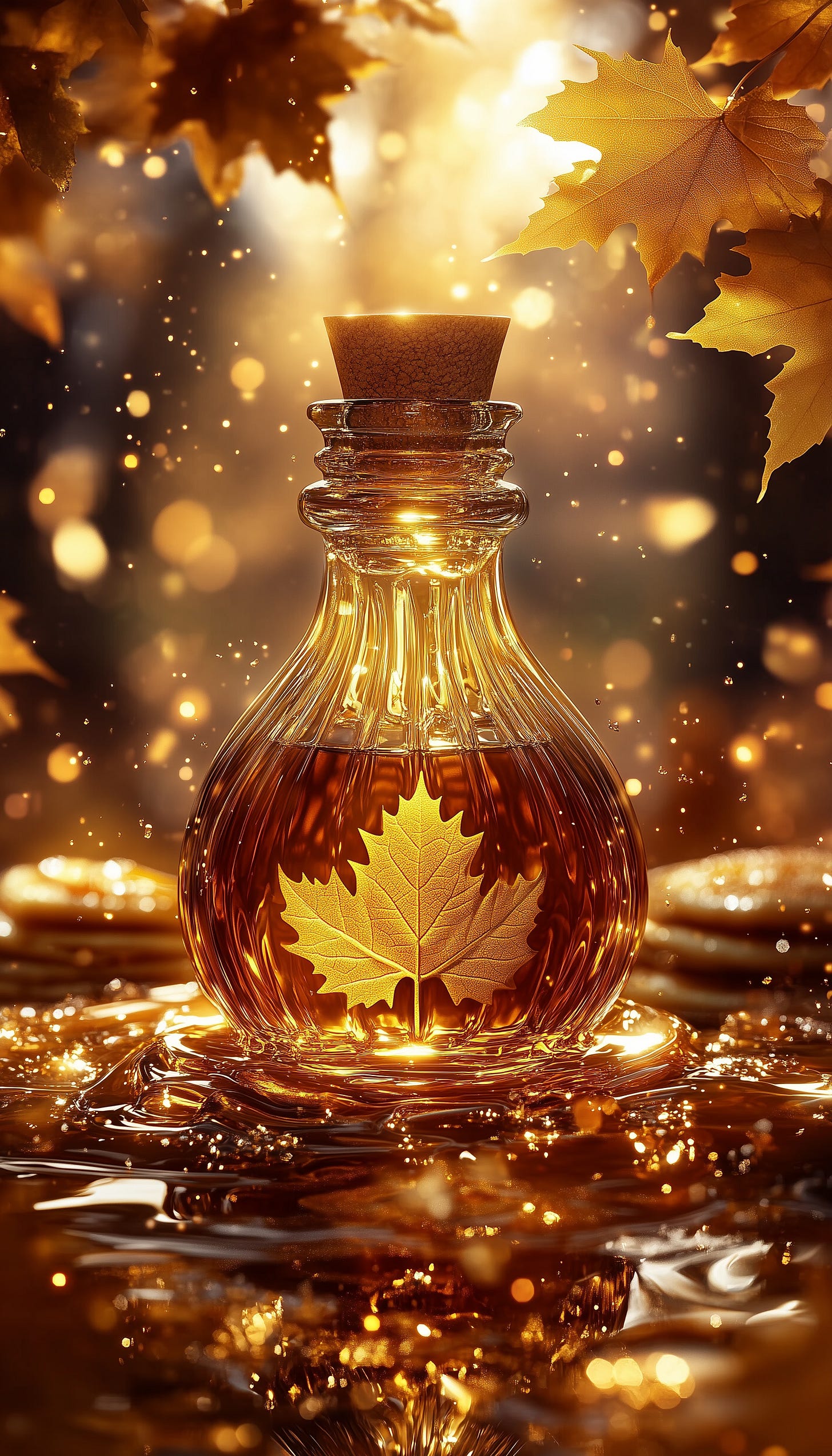Maple syrup, often associated with autumnal breakfasts and cozy pancake mornings, carries a deeper story rooted in history and health. Many believe that the golden liquid is harvested in the fall, but this is a common misconception. In reality, maple syrup is tapped during early spring when the sap surges from the roots of maple trees, storing nutrients that flow upwards towards the branches and limbs for leaf production. Here’s a closer look at the health benefits, cultural significance, and how this delicious natural sweetener is far better than its artificial counterpart.
Health Benefits of Maple Syrup
Rich in Antioxidants: Maple syrup contains over 24 different antioxidants, including phenolic compounds that help neutralize free radicals in the body, reducing the risk of chronic diseases like heart disease and cancer.
Supports Healthy Digestion: Maple syrup is more than just sugar; it contains minerals like zinc and manganese, which are essential for immune system health and metabolism, supporting overall digestion.
Anti-Inflammatory Properties: Studies have found that maple syrup can help reduce inflammation, making it a great alternative sweetener for those trying to limit processed sugars that can contribute to inflammation-related conditions.
Low Glycemic Index: Compared to regular table sugar and many artificial sweeteners, maple syrup has a lower glycemic index, meaning it won’t spike your blood sugar as quickly, offering a more gradual release of energy.
Nutrient-Dense: Unlike artificial syrups, pure maple syrup is packed with essential vitamins and minerals such as potassium, calcium, magnesium, and riboflavin, which contribute to maintaining overall health.
Misconception: Fall vs. Spring Tapping
It’s easy to picture maple syrup production as part of the fall harvest, but sap tapping occurs in the early spring when there are cold nights and warmer days. This temperature fluctuation triggers the flow of sap from the roots to the branches, where it is collected. The sap is then boiled down to create the syrup we know and love. Each tree can yield between 10 to 20 gallons of sap, which takes around 40 gallons to produce just one gallon of maple syrup. The process is labor-intensive but worth the effort for the nutrient-rich product it creates.
Meeting the Demand: How Many Trees Does It Take?
Considering that it takes about 40 gallons of sap to produce just one gallon of syrup, the demand for maple syrup is met by millions of trees, primarily in North America. Canada, especially Quebec, produces about 70-75% of the world's supply with over 34 million taps managed by 13,500 maple syrup producers. In the U.S., states like Vermont, New York, and Maine also contribute significantly to production, with Vermont alone accounting for around 5.5 million taps. To ensure supply remains steady even in low-yield years, Quebec maintains a "strategic reserve" of syrup, keeping prices stable and meeting global demand. Sustainable tapping practices help ensure that the trees continue to thrive while providing this sweet, natural resource year after year.
Sustainable Tapping: Does It Harm the Trees?
When done correctly, tapping maple trees does not harm them. The process involves drilling a small hole into the tree to collect sap, and as long as the tree is healthy and large enough, it can handle one to three taps. After the sap season, the tree begins to heal naturally, closing the hole within a year or two. Sustainable practices, such as limiting the number of taps and ensuring trees have a diameter of at least 10-12 inches, allow trees to thrive for many years—often over a century—while continuing to produce sap for syrup. Responsible producers ensure that tapping is done in a way that protects the long-term health of the trees.
Cultural and Historical Significance
Maple syrup has deep roots in North America, particularly with Indigenous communities who first discovered how to tap maple trees and collect the sap. They would boil it down to create syrup or maple sugar, which was a crucial part of their diet and trade. Maple syrup production eventually became an integral part of settler life and the economy, especially in regions like Quebec and New England, where it remains a symbol of cultural heritage and pride.
In popular culture, maple syrup is often considered a symbol of Canadian identity. It's not just a food product but a reflection of the deep connection people have with the land and the seasons.
Conspiracy Theories: Are There Any?
One amusing conspiracy theory that occasionally surfaces is that some producers dilute their maple syrup with artificial sweeteners or use genetically modified trees to increase production. However, maple syrup production is strictly regulated, especially in Canada, where laws are in place to ensure the purity of the product. Another theory claims that the “Maple Syrup Cartel” in Quebec controls the world’s syrup supply, creating a monopoly and artificially inflating prices. While it's true that Quebec's producers do have significant control over the market, this structure is largely in place to protect farmers and ensure consistency in syrup quality.
How Maple Syrup is Made
The process of making pure maple syrup is relatively simple but requires time and precision. In early spring, maple trees are tapped by drilling small holes into the trunk and inserting spiles, which allow the sap to drip out into collection buckets or tubes. The sap is then gathered and boiled down to remove the water, concentrating the sugars. This evaporation process results in the thick, amber syrup we enjoy.
Why Pure Maple Syrup is Better Than Artificial Syrup
Artificial maple syrup is often made with high-fructose corn syrup, artificial colors, and flavors, offering none of the nutritional benefits of pure maple syrup. It may be cheaper, but it lacks the vitamins, minerals, and antioxidants that make real maple syrup such a healthful choice. Moreover, artificial syrups have a higher glycemic index, which can lead to spikes in blood sugar and energy crashes shortly after consumption.
In contrast, pure maple syrup is not only richer in flavor but also provides a natural, nutrient-dense sweetener that enhances both taste and health.
Conclusion
Whether drizzled over pancakes or added to your favorite recipes, maple syrup offers far more than just a sweet taste. It’s a natural product filled with health benefits, cultural significance, and a history that spans centuries. Next time you reach for that bottle, choose the real thing—your body will thank you!







